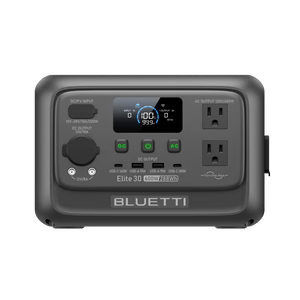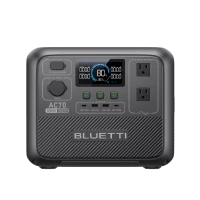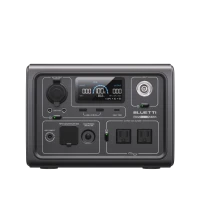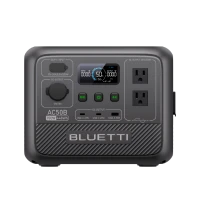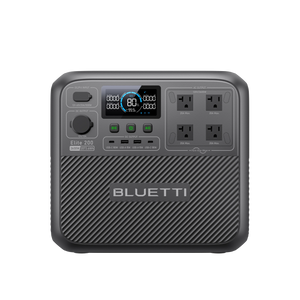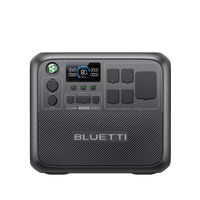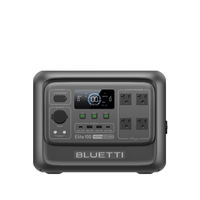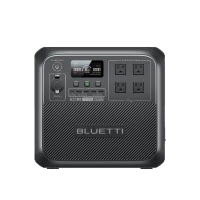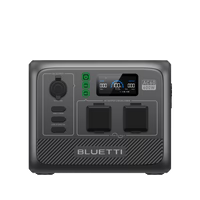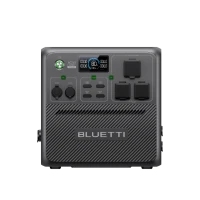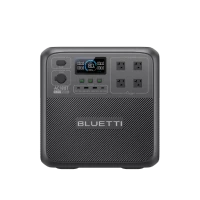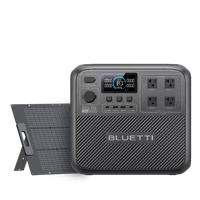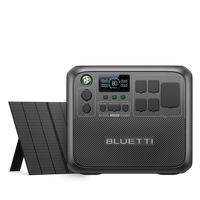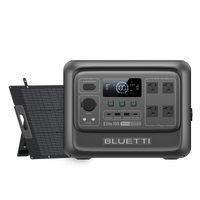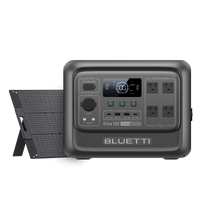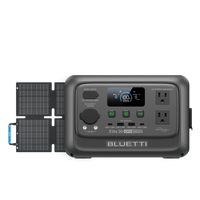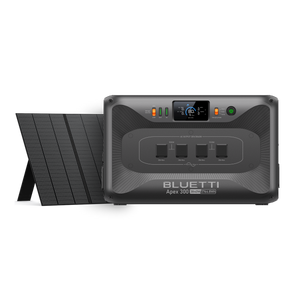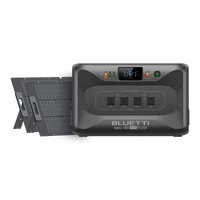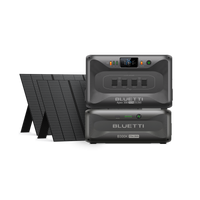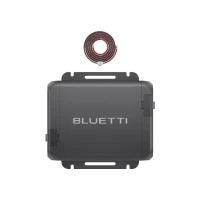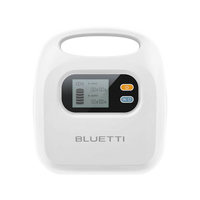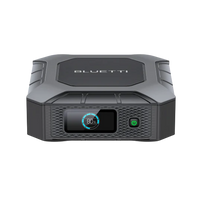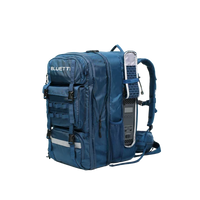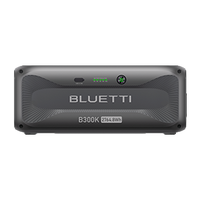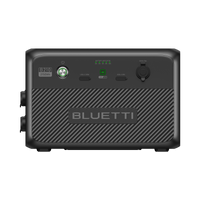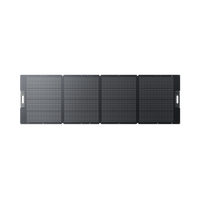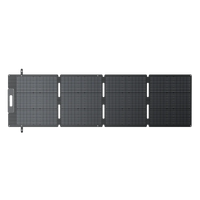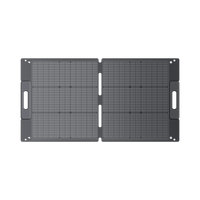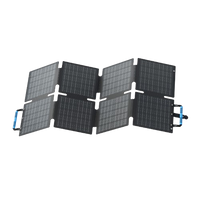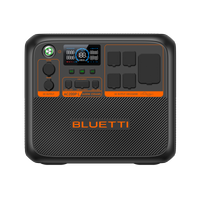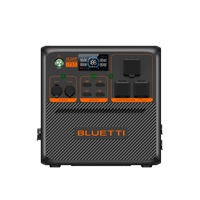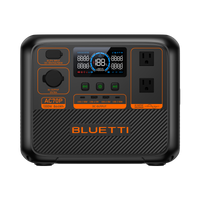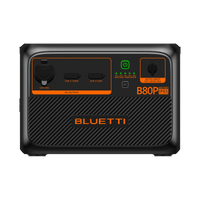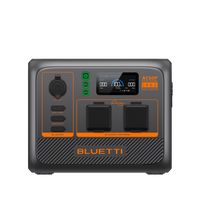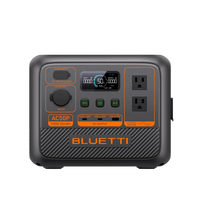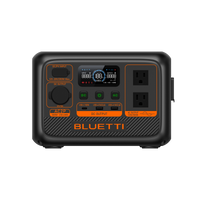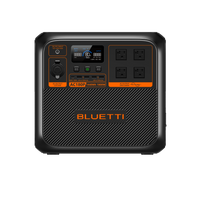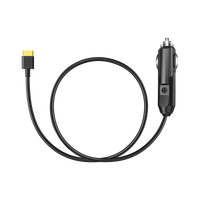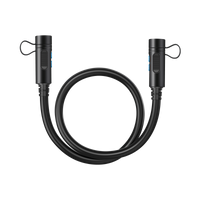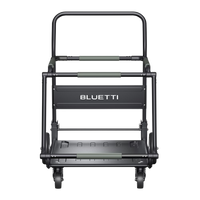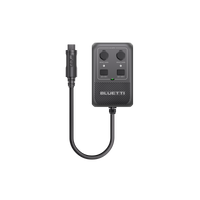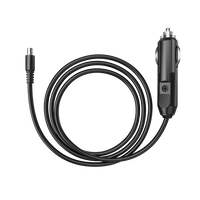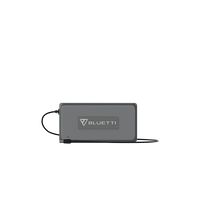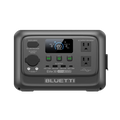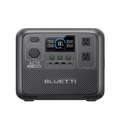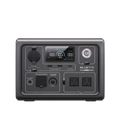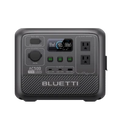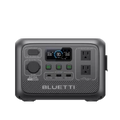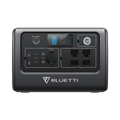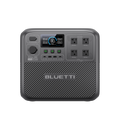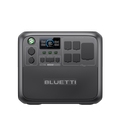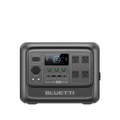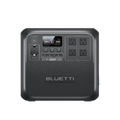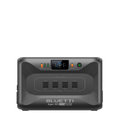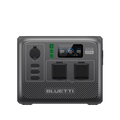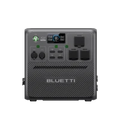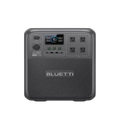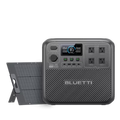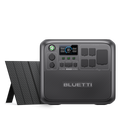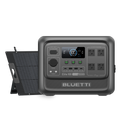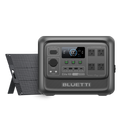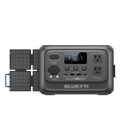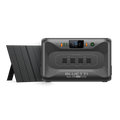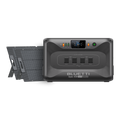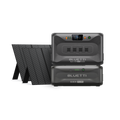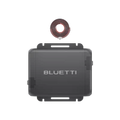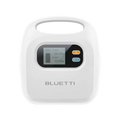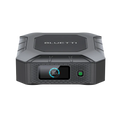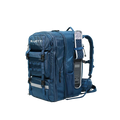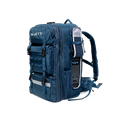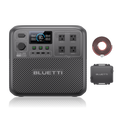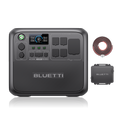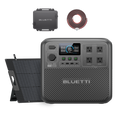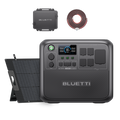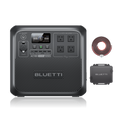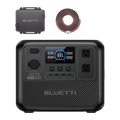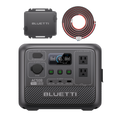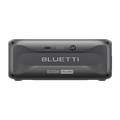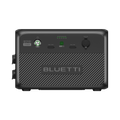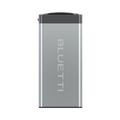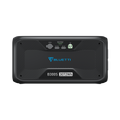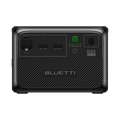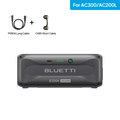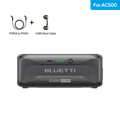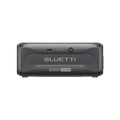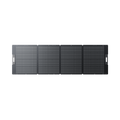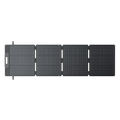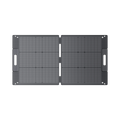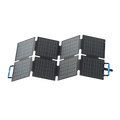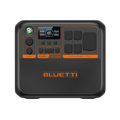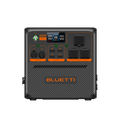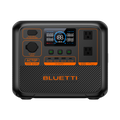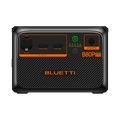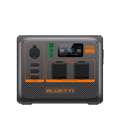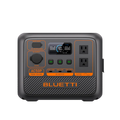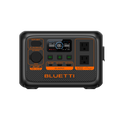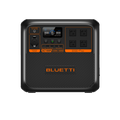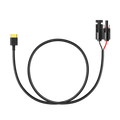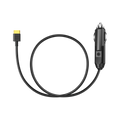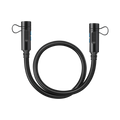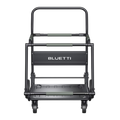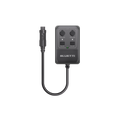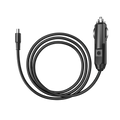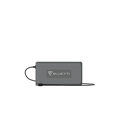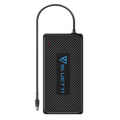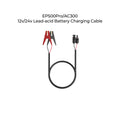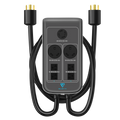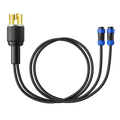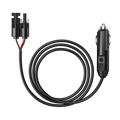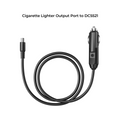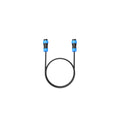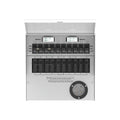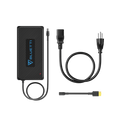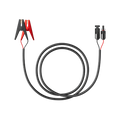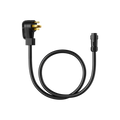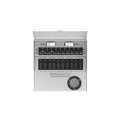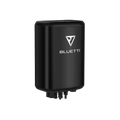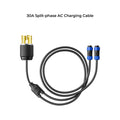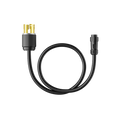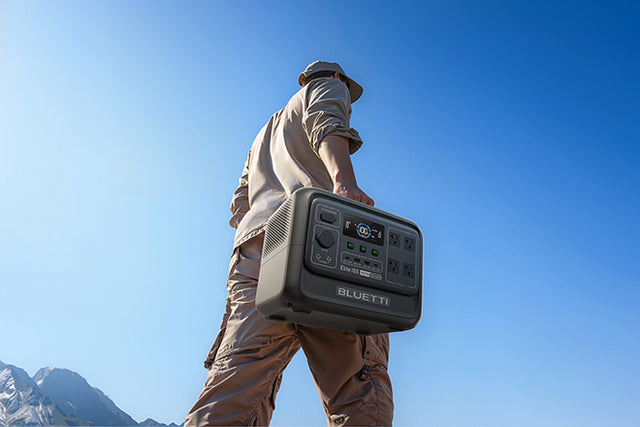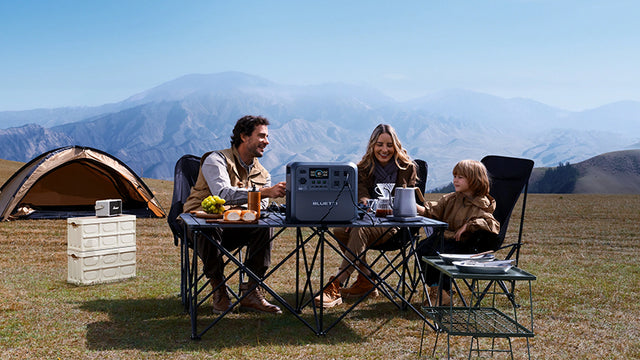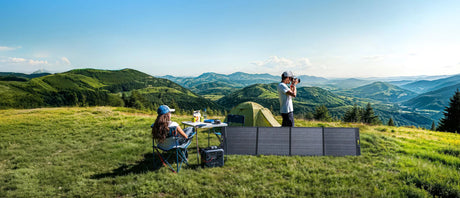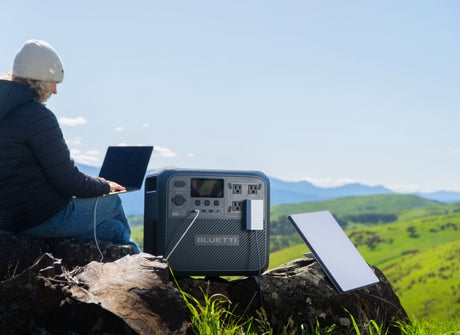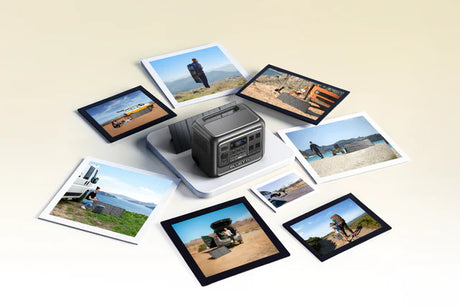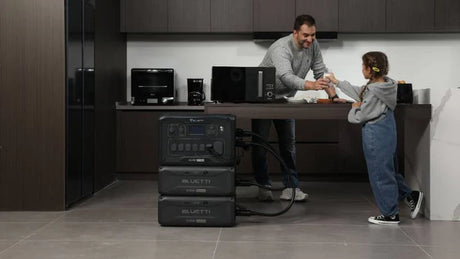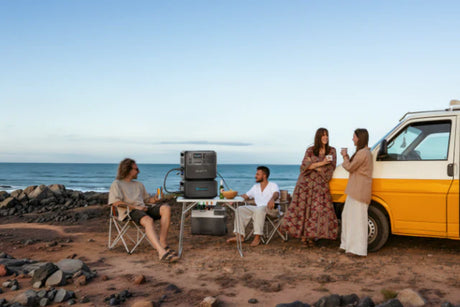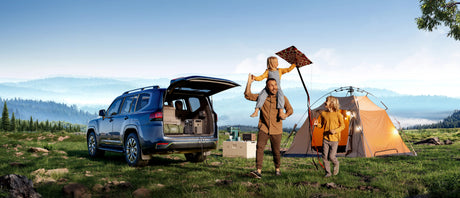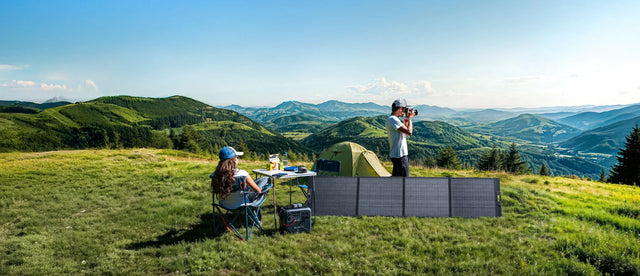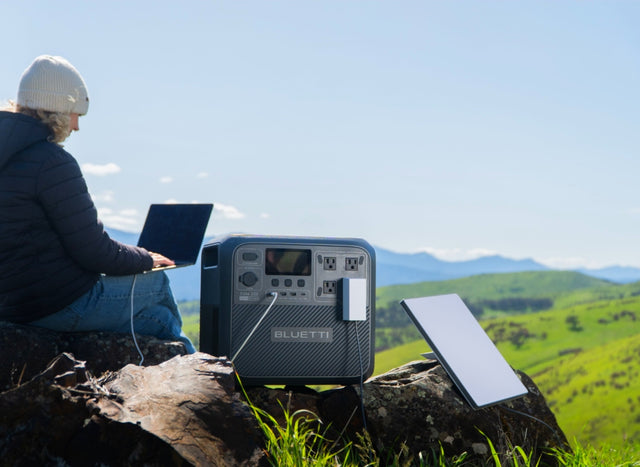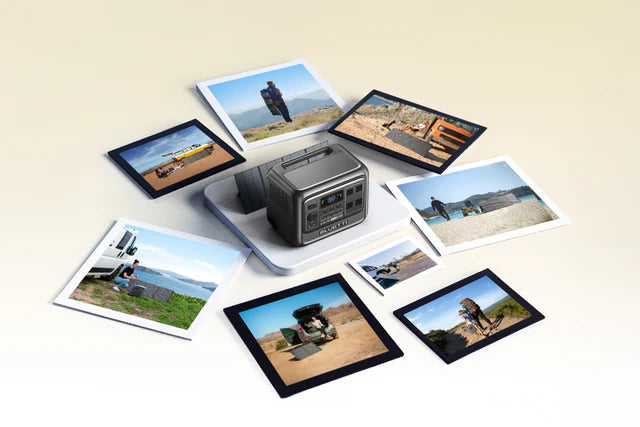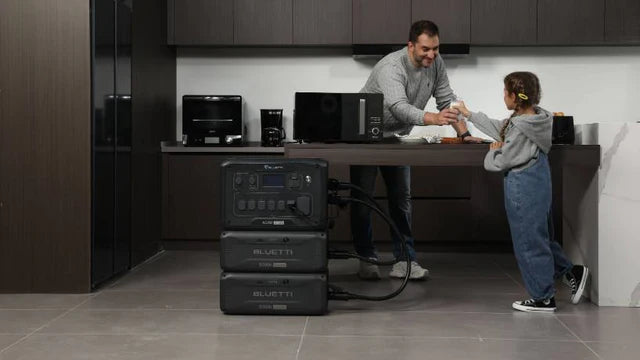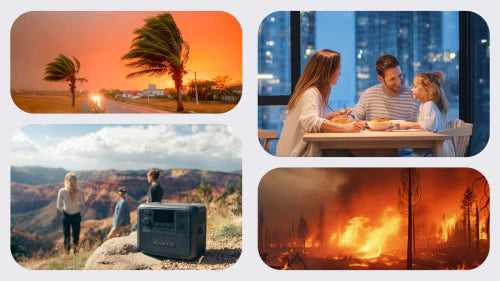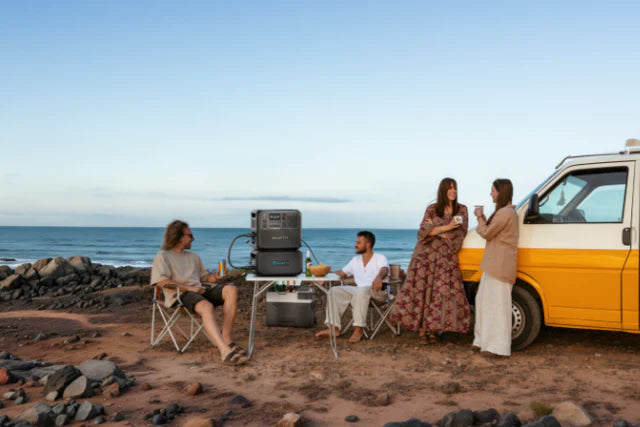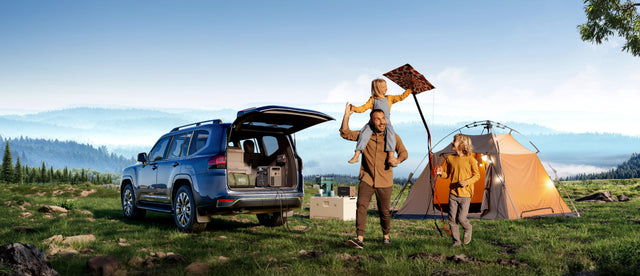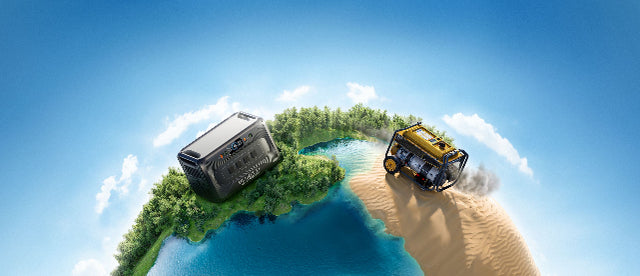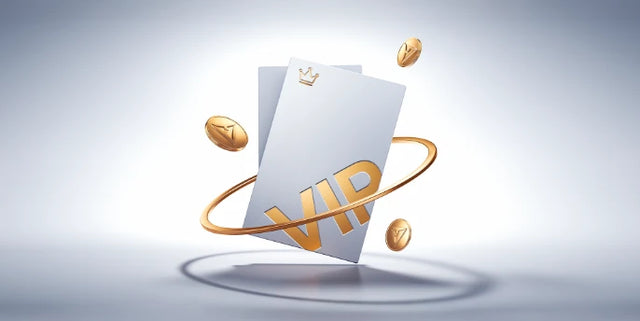Ice fishing is a traditional form of winter recreational activity in Canada, attracting over a million people every year. This tradition is greatly influenced by the Great Lakes, which is the largest fresh surface water body in the world. Here’s a fun fact: With approximately 30% of Canadians living in the Great Lakes basin, this region offers the perfect destination for ice fishing adventures. Due to its extremely cold winters, Canada’s 2 million lakes make it one of the best places in the world for ice fishing.
If you want the unusual combination of peace and thrill at the same time - ice fishing is the way to go. You can do it in the frosty wind of lake Simcoe or in a camp on frozen Saskatchewan’s waters. Secondly, to make the best of your frosty experience, there is nothing more important than dressing appropriately. Last but not the least, a portable power station will make your trip worthwhile - we’ll explain why:
Here’s a deep dive into how to prepare for ice fishing.
What Makes Ice Fishing So Special?
Ice fishing is an excellent way to communicate with nature during one of the most picturesque seasons. The ice-covered water, and the crunch of sound from the ice when you break a hole in the ice - the whole process is spectacular. However, it is also a task that needs preparation, hard work, time and the right instruments to avoid any accidents, and guarantee success at the same time.
Essential Gear for Ice Fishing
To enjoy a productive day on the ice, you’ll need:
- Ice Auger: This tool is very important for the penetration of the ice thicker than 2 ft. Manual augers are lightweight and comparatively cheaper while the electric and the gasoline augers are efficient where one is trapped with thick ice layers.
- Ice Shelter: These are normally available in pop-up kind or flip-over kinds and act as shields from the extreme winds and cold thus making the interior warm.
- Fishing Rods and Bait: As for the equipment, choose telescopic rods that are 28-40 inches long, simply because ice-fishing rods are shorter, but stronger. They are robust enough to handle the cold temperatures and direct pressure of fishing through ice. As far as the bait goes, choose live batis such as walleye, perch, or trout.
- Warm Clothing: To counteract the cold, wear layered, waterproof and insulated clothes. Moreover, wear thermal gloves, socks and good winter boots as well.
- Portable Power Station: A multi-faceted backup power source to keep the lights on, communications open and everyone comfortable.

Top Ice Fishing Destinations in Canada
Canada has many prime ice fishing sites for enthusiasts and there are various sites that are endowed with various fish bounty. Here are some of the top destinations:
1. Lake Simcoe, Ontario:
Said to be the home of ice fishing in Canada, this lake specialises in yellow perch and lake trout. It is easily accessible and has well maintained ice huts due to close proximity to urban centres - and is ideal for beginners as well as professionals.
Best Time to Visit:
Mid-January to mid-March, when the ice is thickest.
Fishing Guides for Specific Fish Species:
- Yellow Perch: Use small live minnows or artificial jigs tipped with wax worms. Drop your bait near the lake bed and gently jig it to attract perch schools.
- Lake Trout: Focus on deeper areas of the lake and use vertical jigging with tube jigs, spoons, or swimbaits. Early morning tends to be the most productive time.
Practical Tip:
Rent an ice fishing guide or hut for a hassle-free experience. Many local operators offer gear, heated shelters, and insider knowledge on the best fishing spots.
Regional Safety Conditions:
- Ice Thickness: Varies near shorelines; ensure the ice is at least 4 inches thick for walking and 8-12 inches for vehicles.
- Challenges: Shallow areas and docks may have weaker ice due to currents or heat sources.
Rental/Shelter Availability:
- Heated Ice Huts: Widely available from local operators; often include pre-drilled holes.
- Full-Service Rentals: Gear, bait, and guide packages are easy to book near the lake.

2. Lake Winnipeg, Manitoba:
This enormous lake is well known for greenback Walleye. One can be sure that due to the size of the lake there is enough choice for every fisherman who wants to have his piece in the water.
Best Time to Visit:
- Mid January to Late March.
Fishing Guides for Specific Fish Species:
- Greenback Walleye: Use brightly colored jigging spoons or rattle baits that mimic minnows. Walleye often congregate in deeper drop-offs, so a fish finder can help pinpoint their location.
Practical Tip:
- Pack a fish finder or underwater camera to locate the prized walleye beneath the ice.
Regional Safety Conditions:
- Ice Thickness: Typically reliable mid-season but weaker near inlets and areas with strong currents.
- Challenges: Vast size makes navigation tricky; GPS or guide assistance recommended.
Rental/Shelter Availability:
- Portable Ice Shacks: Available for rent, equipped with heaters and benches.
- Gear Packages: Local businesses offer gear like augers, sleds, and bait for convenience.
3. Great Slave Lake, Northwest Territories:
It is one of the deepest lakes in North America; thus it is suitable for catching giant lake trout and burbot. Psst - The highly desired northern lights grace your fishing experience most of the time.
Best Time to Visit:
- Late March to early May, when ice conditions are most stable.
Fishing Guides for Specific Fish Species:
- Lake Trout: Drop large tube jigs, white spoons, or soft plastics near deep, underwater structures where trout like to lurk. Slow jigging works best in cold water.
- Burbot: Fish at night using dead bait like smelt or cut herring. Place your bait on the bottom of the lakebed, as burbot are bottom-dwellers.
Practical Tip:
- Dress in extreme cold-weather gear and consider hiring a local guide familiar with the lake’s expansive terrain.
Regional Safety Conditions:
- Ice Thickness: Stable in winter but varies in bays and near river inflows.
- Challenges: Harsh weather and remoteness; ensure emergency kits are ready.
Rental/Shelter Availability:
- Heated Shelters: Limited availability; pre-book well in advance.
- Local Guides: Often include portable shelters and snowmobile transport.
4. Tobin Lake, Saskatchewan:
Various tournaments on the Tobin Lake were made popular by their record-setting northern pike and walleye as well as their ice fishing prowess.
Best Time to Visit:
- Mid to late December.
Fishing Guides for Specific Fish Species:
- Northern Pike: Set up tip-ups with large dead bait or live minnows near weed beds or shallow areas. Pike are aggressive, so they often strike flashy lures as well.
- Walleye: Use jigging spoons tipped with minnows in deeper channels or along drop-offs. Dawn and dusk are prime times for catching walleye.
Practical Tip:
- Book accommodations early if you plan to participate in tournaments (August and October), as they attract large crowds.
Regional Safety Conditions:
- Ice Thickness: Can be unpredictable near inflows/outflows. Confirm thickness exceeds 11 inches for vehicles.
- Challenges: Crowded areas during tournaments may lead to reduced ice stability.
Rental/Shelter Availability:
- Accommodations: Many local lodges cater to tournament participants with package deals.
- Ice Shacks: Available for rent, often with drilled holes and heating.

5. Kawartha Lakes, Ontario:
This chain of lakes provides various species such as crappie, perch, and muskie hence makes it a perfect place for family fishing adventure.
Best Time to Visit:
- January to March.
Fishing Guides for Specific Fish Species:
- Crappie: Drop small jigs or live minnows near submerged trees or vegetation. Crappie tend to group in schools, so once you find one, there are likely more nearby.
- Perch: Use a small jig with live bait or soft plastics. Look for schools near shallow, sandy areas or weed lines.
- Muskie: Target muskies with large, flashy lures like spinnerbaits or jerkbaits. Cast near submerged structures and retrieve slowly to mimic injured prey.
Practical Tip:
- Look for rental services offering heated huts and pre-drilled fishing holes for added convenience.
Regional Safety Conditions:
- Ice Thickness: Can vary due to the chain’s interconnected waterways. Frequent checks are essential.
- Challenges: Watch for pressure ridges and thin ice in areas with fluctuating depths.
Rental/Shelter Availability:
- Heated Huts: Common across the region, offering comfort for families.
- Convenience Services: Many rentals come with bait, lines, and augers for hassle-free fishing.
While shelters keep you warm, mastering ice fishing techniques is essential for a successful trip.
Polishing Ice Fishing Techniques
Indeed, ice fishing is not just about drilling a hole in the ice and just sitting there - it’s a game of skill. Here are some key techniques to boost your success:
Jigging: A very effective technique, in which you take your bait to the depth of the water where you want your line to be and then sharply jerk the bait up in the water column. Fishers need to cup this technique with bright colored lures or live bait to attract the fish.
Tip-Ups: A tip-up is a piece of fishing equipment that supports a fishing line and alerts you to a bite. Great to use when you are still fishing. This enables you to fish many holes at the same time.
Using Electronics: Most of today’s fish finding devices and underwater cameras show you how fish behave, and where they are located to help you drop your bait correctly.
Chumming: This technique involves placing small baits with high visibility into the water such that when several fish approach the area, they get caught easily. Remember only to use environmentally friendly bait that will not affect the surrounding environment.
Hole Hopping: When fish are not biting, do not be afraid of changing your position. Try several separate holes in various areas and fish the place where fish is most lively.

How to Stay Safe While Ice Fishing
Precaution is key when moving into frozen Lake. Follow these essential tips to ensure a secure and enjoyable experience:
Check Ice Thickness: Check that the ice is minimum 4 inches for walking, 5-7 inches for ATVs and 8-12 inches for cars or trucks. While moving use an ice chisel or auger to check for the ice thickness.
Wear Flotation Suits: Invest in an insulated flotation suit designed for ice fishing. It provides warmth and acts as a life jacket if you fall through the ice.
Carry Ice Picks: Keep these handy tools around your neck or in an accessible pocket. They can help you pull yourself out of the water if the ice breaks.
Bring Emergency Gear: Pack a first aid kit, rope, and a fully charged mobile phone for emergencies.
Monitor Weather Conditions: Avoid fishing during snowstorms or extreme cold snaps. Sudden changes in temperature can weaken the ice.
Portable Power Station For Safety
A portable power station can be a lifesaver by powering emergency equipment:
- Rechargeable Flashlights: Ensure visibility in low-light conditions.
- Heated Blankets: Combat hypothermia with electric blankets powered by the station.
- GPS Devices: Stay oriented on vast, frozen lakes.
Why Portable Power Stations Are a Game-Changer for Ice Fishing
It cuts the need to use the traditional gas generators that have been in practice in previous years. For example, the new BLUETTI Elite 200 V2 Portable Power Station is clean, noiseless, efficient and perfect for today’s ice fishing needs.
Benefits of a Portable Power Station:
- Silent Operation: No more generators making loud noises and thumping music infringing with the serenity of the ice on the lake.
- Eco-Friendly: Emits no harmful fumes.
- Compact and Lightweight: Compact enough to transport them to your intended area of ice fishing when the ice is still thick.
- Multi-Device Charging: Controls everything from heaters to smartphones at the same time.
With an impressive 2,073.6Wh capacity and 2,600W output, the BLUETTI Elite 200 V2 powers your heaters, fish finders, and more, ensuring you’re always ready for the next catch. Here’s how it enhances your experience:
- Keeping Warm: Power small space heaters to keep your shelter cozy. For instance, the Elite 200 V2 can run a 40W heater for over 31 hours.
- Lighting Up the Darkness: Winter days are short, and the BLUETTI Elite 200 V2 ensures your LED lights stay on for hours, providing visibility and safety.
- Powering Appliances: Enjoy the comforts of home with the ability to power a coffee maker for 1.6 hours, an electric griddle for over 3 hours, or a portable refrigerator for more than 26 hours.
- Staying Connected: Charge your smartphone 63.5 times or power a laptop for 22.7 hours. Whether for safety, entertainment, or sharing your catch online, staying connected has never been easier.
- Ice Fishing Tech: From fish finders to underwater cameras and electric augers, this portable power station ensures all your tech works seamlessly.
- Eco-Friendly Adventure: The BLUETTI Elite 200 V2 supports sustainable practices by eliminating fuel spills and reducing noise pollution.
- Safety: A portable power station is also a safety tool. It can power emergency equipment like: GPS Devices ( To prevent getting lost on vast, frozen lakes), Heated Blankets (To combat hypothermia in emergencies), and Rechargeable Flashlights ( For signaling or navigating in low visibility)

With TurboBoost charging technology, this power station reaches 80% capacity in just one hour, ensuring you’re always ready for your icy expedition.
How to Plan Your Ice Fishing Trip
Preparation is the key to a successful ice fishing adventure. Here’s a checklist to get you started:
Permits and Regulations
- Check Local Regulations: Obtain necessary fishing permits and review local guidelines to ensure compliance.
- Know Your Limits: Familiarize yourself with catch limits and species-specific rules.
Packing Essentials
- Warm Clothing: Layered, waterproof attire including gloves, hats, and thermal socks.
- Fishing Gear: Ice auger, rods, bait, and a portable fish finder.
- Shelter and Heater: Pop-up ice shelters and portable heaters for comfort.
- Food and Drinks: Pack high-energy snacks and a thermos of hot beverages.
Scouting Locations
- Research Online: Look up top-rated fishing spots and recent angler reviews.
- Use Maps and Apps: Leverage mapping tools to identify promising areas.
Weather Forecasting
- Check Forecasts: Use reliable apps to monitor temperature, wind speed, and precipitation.
- Avoid Warm Days: Thawing ice can become unstable, increasing the risk of accidents.
- Prepare for the Worst: Pack extra layers and gear in case conditions worsen unexpectedly.
Conclusion
Don't let the cold and the elements limit your time on the ice. With a portable power station like the BLUETTI Elite 200 V2, you can stay connected, stay warm, and stay fishing longer. It's the ultimate accessory for any serious ice angler. So, what are you waiting for? Elevate your ice fishing game today!
